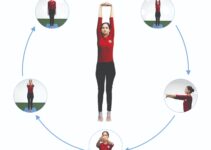What is the meaning of Padmasana?
Padmasana (pronounced as “Pa-dah-maa-sun-aa”) comprises two words: Padma means ‘lotus’ and asana means ‘yoga posture’. That’s why it is known as the Lotus pose. This is one of the best meditative yoga poses. Padmasana is a crossed-legged Dhyana yoga wherein each foot is placed on the opposite thighs. The Lotus pose has physical, mental, and spiritual values. It is conducive to physical and mental calmness. At first, it is tricky for most people to perform, and uncomfortable if held for a certain period. However, with practice, this asana will prove far more comfortable than the more straightforward sitting positions, such as veerasana and sukhasana. Padmasana almost automatically makes one want to be still. It is with good reason that Buddha is usually depicted in this pose. In Chinese and Tibetan, it is also known as the Vajra position.

Philosophy & origin
This is a meditative, calming, and soothing yoga pose used in Hinduism by God Shiva, Tirthankkaras in Jainism, and Gautama Buddha in Buddhism. The lotus pose has its philosophy. The lotus flower is rooted in the mud but blooms above water and attracts everybody with its beauty. The pose has been described in the 8th-century book Patanjalayogashastravivarana, in the coin of Chandragupta II, and in the text of Nisvasattvasamhita Nayasutra. It has also been described in Hatha Yoga Pradipika, wherein it has been mentioned that the pose is the destroyer of all diseases.
Padmasana variations
- Half lotus pose (Ardha Padmasana): Here one leg is bent and lies on the ground while the other foot is on the thigh of the opposite leg with the heel in contact with the front of the lower abdomen.
- Bound lotus pose ( Baddha Padmasana): Here, the Sadhakas sit in the lotus pose, and their hands reach back to clasp the opposite feet.
- Psychic union pose(Yogamudrasana): The practitioner in the lotus pose bends forward to touch the surface with his head.
How to do Padmasana step by step?
The technique and instructions for adequately performing padmasana are given below:
- Sit with the legs stretched forwards.
- Slowly fold one leg and place the foot on the thigh of the opposite leg with the heel in contact with the front of the lower abdomen.
- Fold the other leg in the same way.
- Both knees should rest comfortably on the floor in the final stage.
- Now, keep your back and head straight and stretched but without strain.
- Close your eyes.
- The hands can be placed on the knees in the Dhyana mudra.
Beginners tip
The practice of the yoga pose is more challenging. Before practising padmasana, it is advised to do half butterfly and knee rotation exercises to loosen the stiff muscles and give you certain flexibility. Suppose you have stiffness. Initially, it is better to practice Ardha padmasana instead. It needs patience and proper practice, which results in perfection. For beginners, the left leg should be folded first. The yoga pose becomes more accessible if a small cushion is placed under the buttocks. Allow the shoulders to relax without raising them.
Padmasana precautions
There are a few limitations and contradictions of practising the lotus pose:
- People suffering from sciatica or sacral infections should not attempt this asana.
- It may cause injury to the knee region.
- Avoid in case of ankle injury.
- Initially, it is better to practice this yoga pose before the yoga teacher as it may injure the beginner.
- Avoid practising the yoga pose in case of leg injury or back problems.
What are the benefits of Padmasana?
- Best yoga for meditation: Padmasana induces mental calmness, an essential prerequisite for pranayama and meditative practices. This tranquillity also helps to bring about physical health and mental equilibrium permanently.
- Abdominal and pelvic organs: The position and pressure of the feet against the thighs reduce the flow of blood to the legs. This blood supply is redirected towards the abdominal and pelvic organs, toning up the organs, muscles, and nerves in this region.
- Aids in digestion: The practising of the pose enables blood supply towards the abdominal and pelvic organs. It stimulates the digestive organs, ensuring proper secretion of enzymes and hormones, thus suitable for better digestion.
- Controls blood pressure: Padmasana helps to reduce muscular tension thereby bringing blood pressure under control.
- Helpful in childbirth: The yoga pose helps with muscular stretching of the pelvic region. If a pregnant lady is practising the carriage, it is helpful for standard delivery.
- Menstrual discomfort: The regular practice of the lotus pose is also beneficial for those who are having problems during their menstruation.
- Good for ankles and knees: Initially, one may feel pain while performing the yoga pose. However, after having some sort of perfections, the same pose starts strengthening your ankles and knees.
- Awakens Kundalini: In the ancient texts, it has been mentioned that the practising of the yoga pose destroys all diseases and awakens the Kundalini.
- Weight loss: It gives maximum stretching to the hips and thighs. Thus, practising the pose regularly helps to lose weight in these regions.






good information. your knowledge about yoga asana is very good.